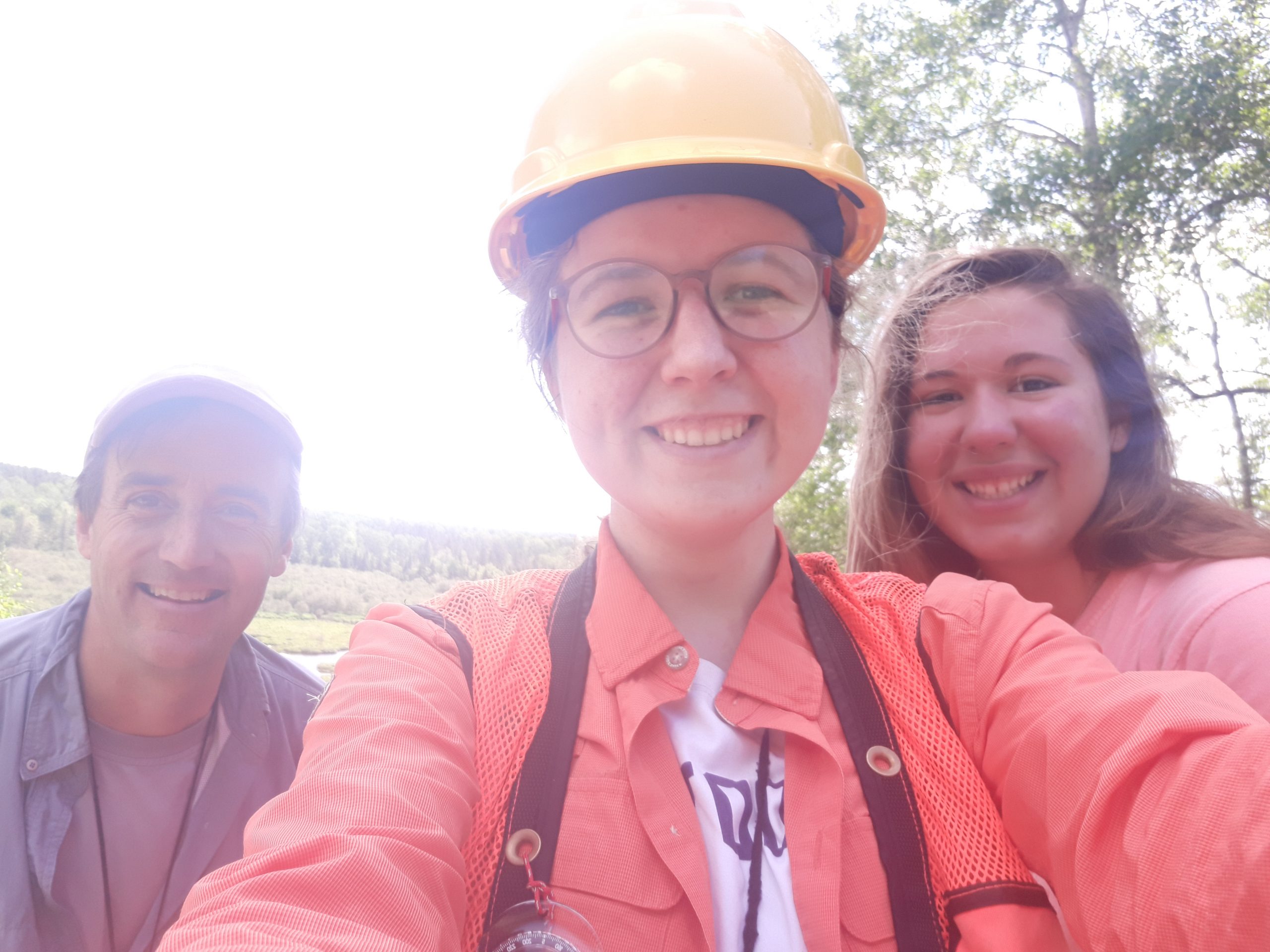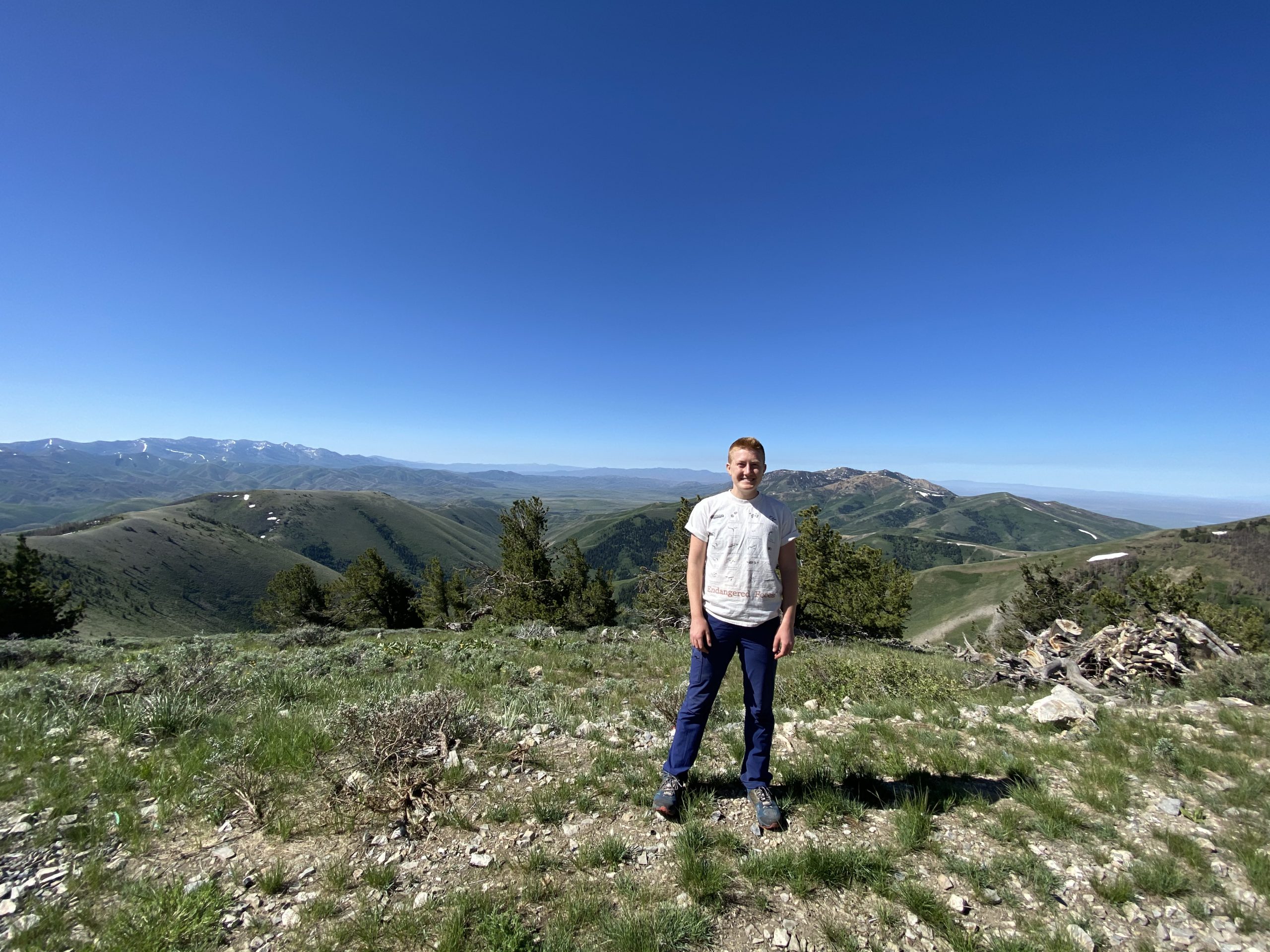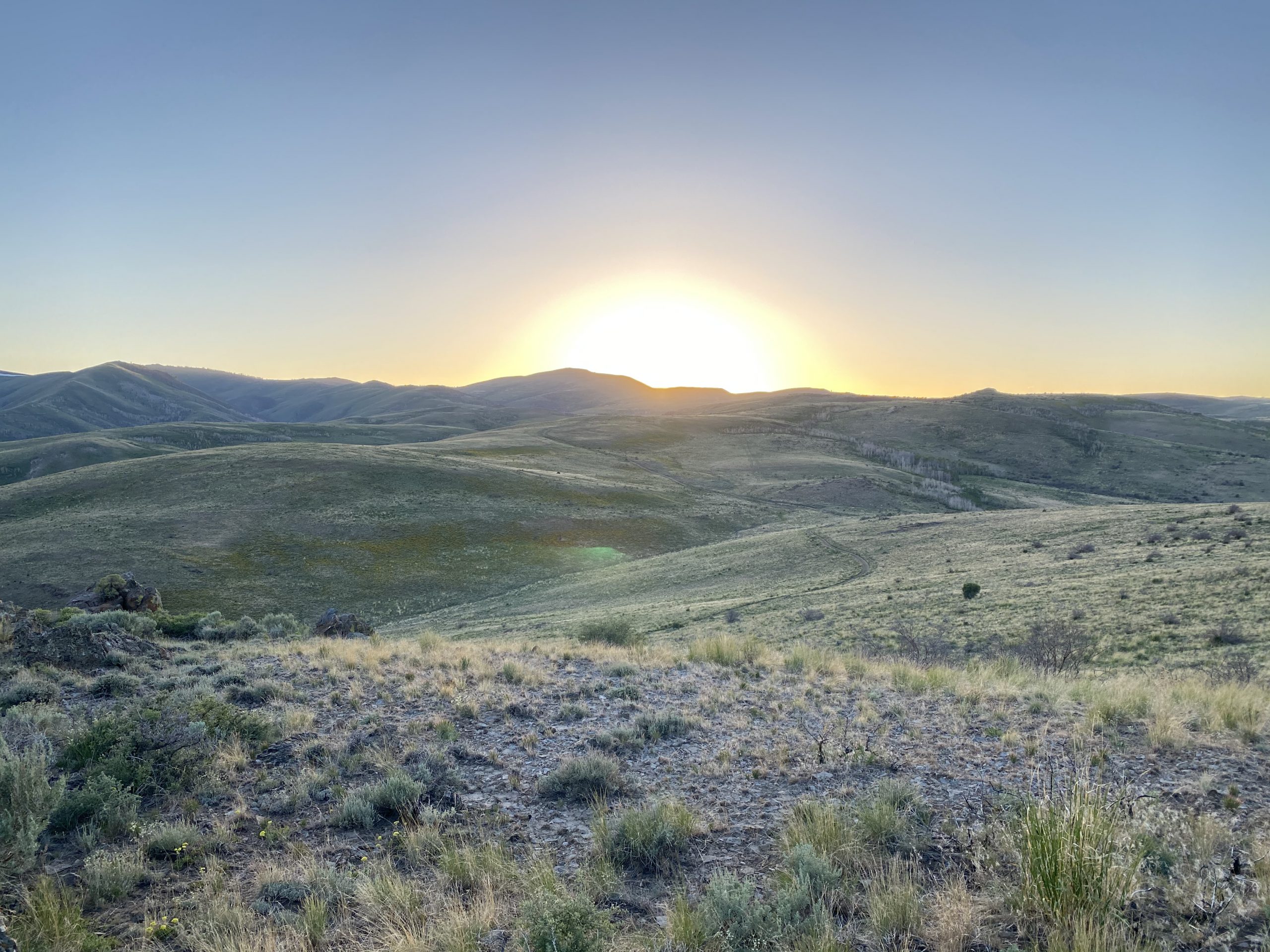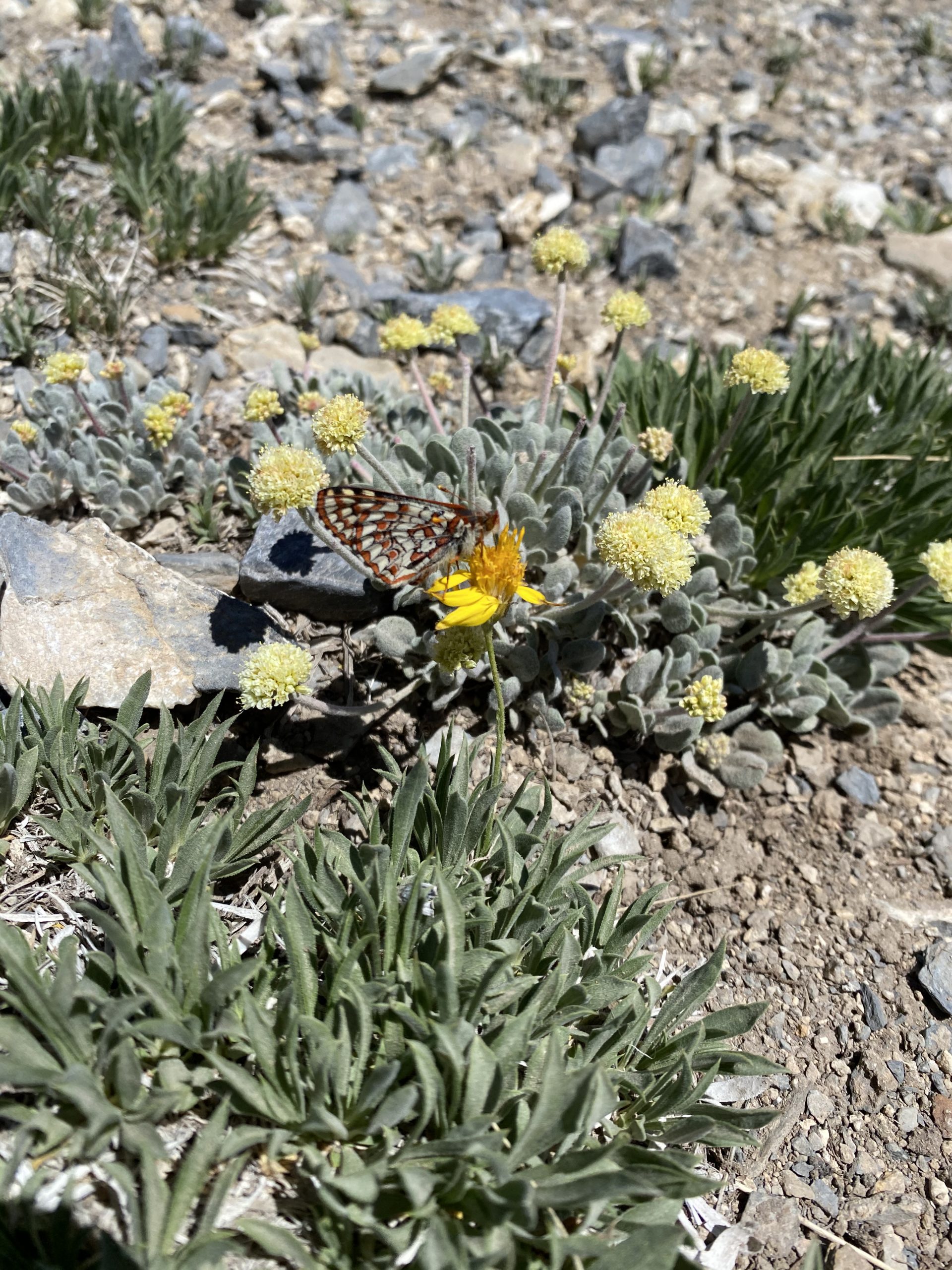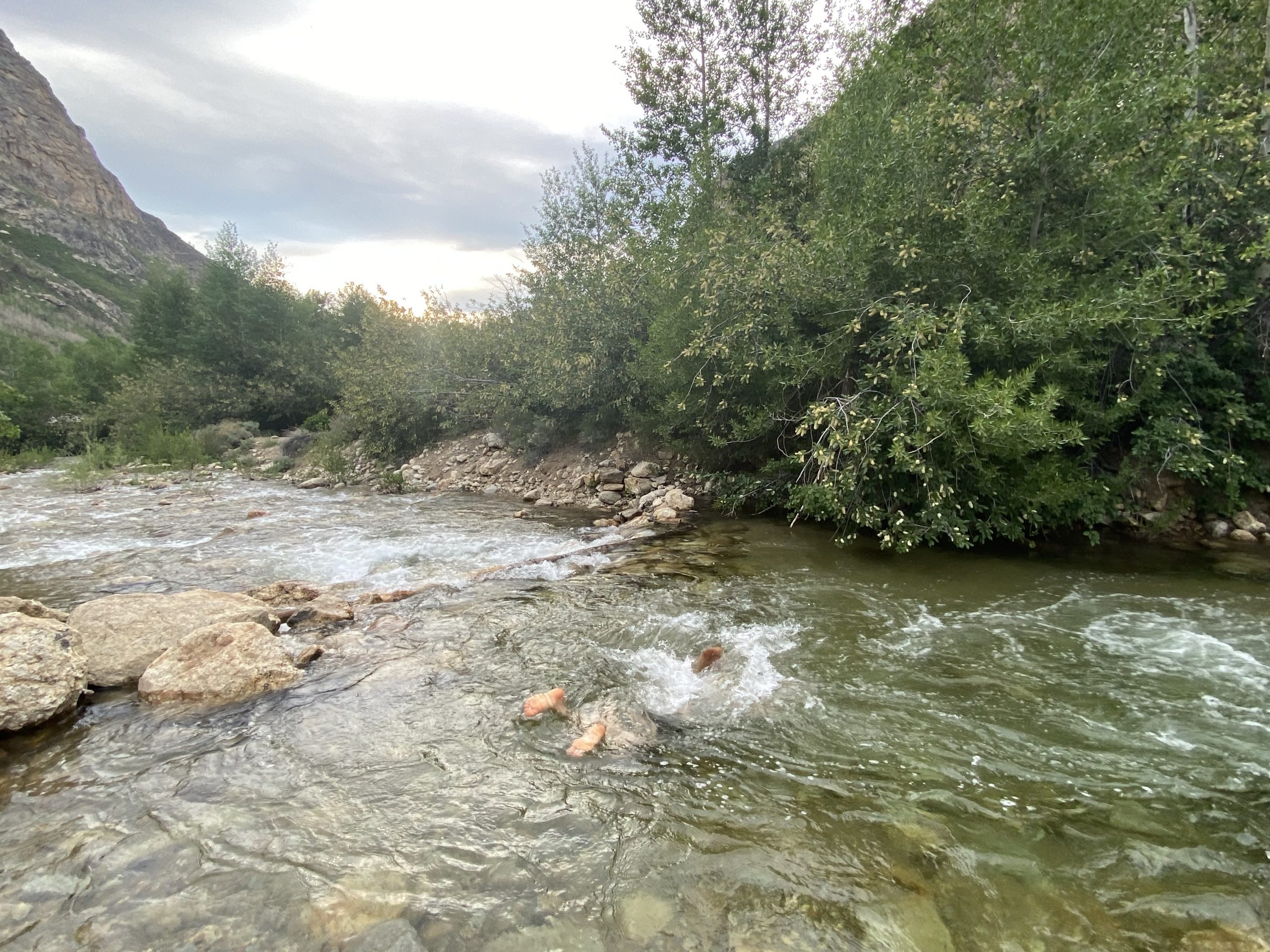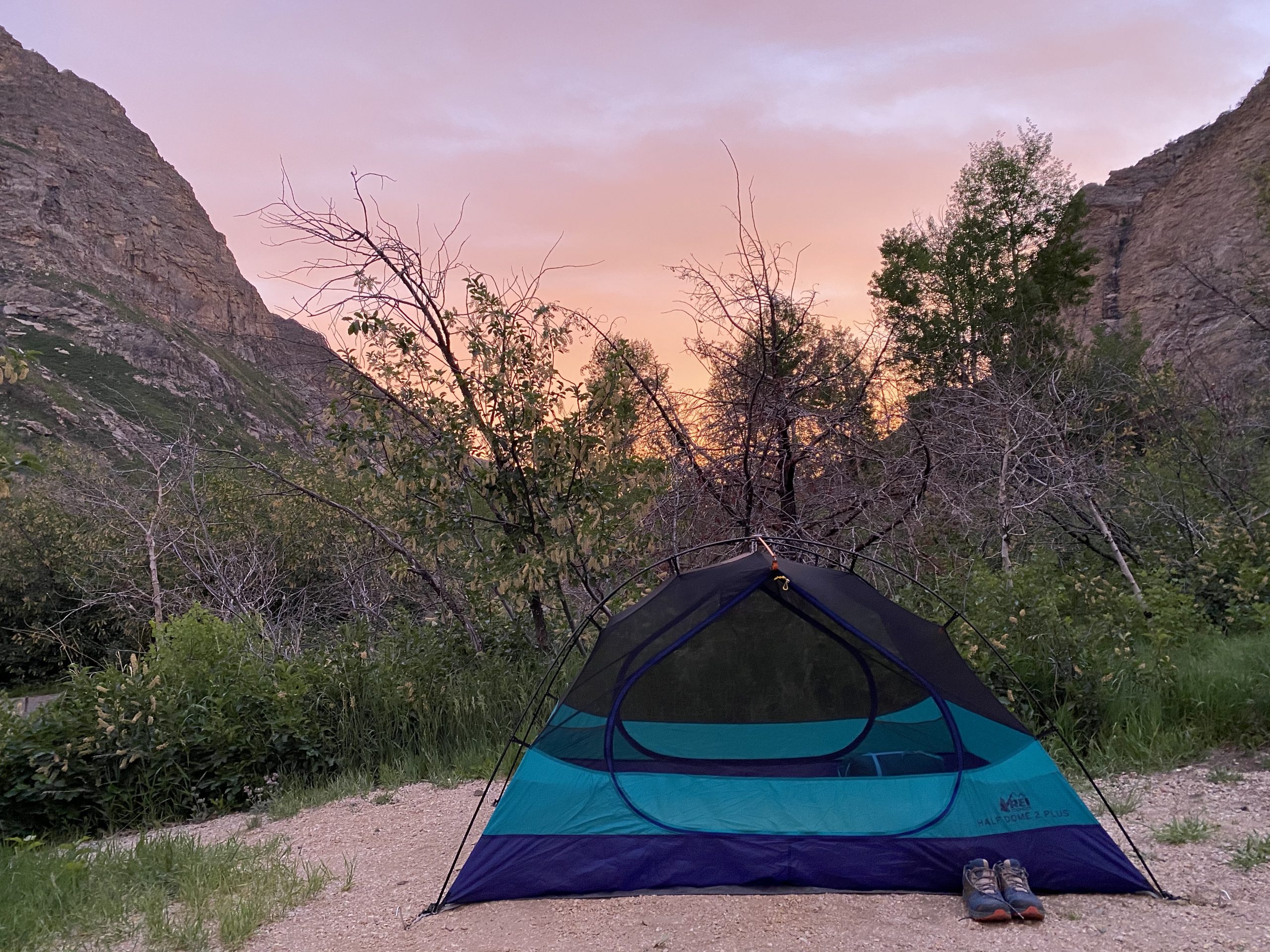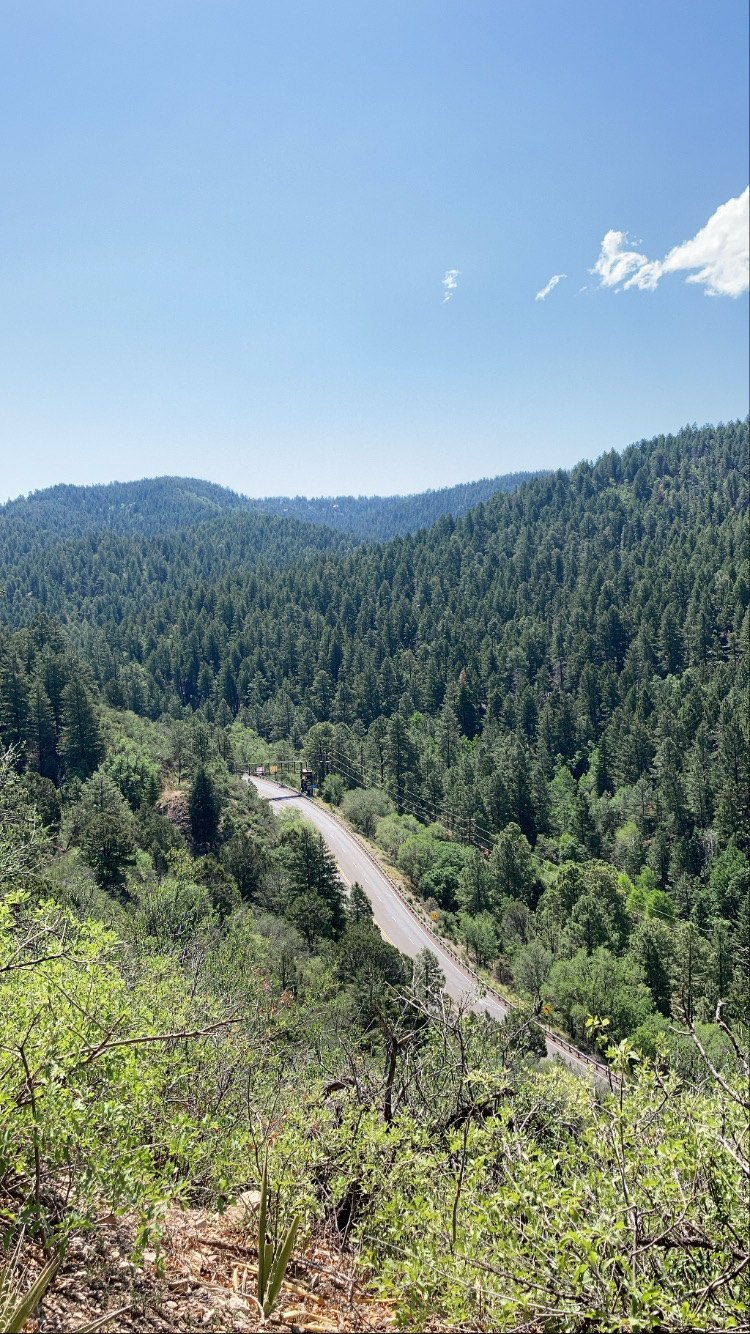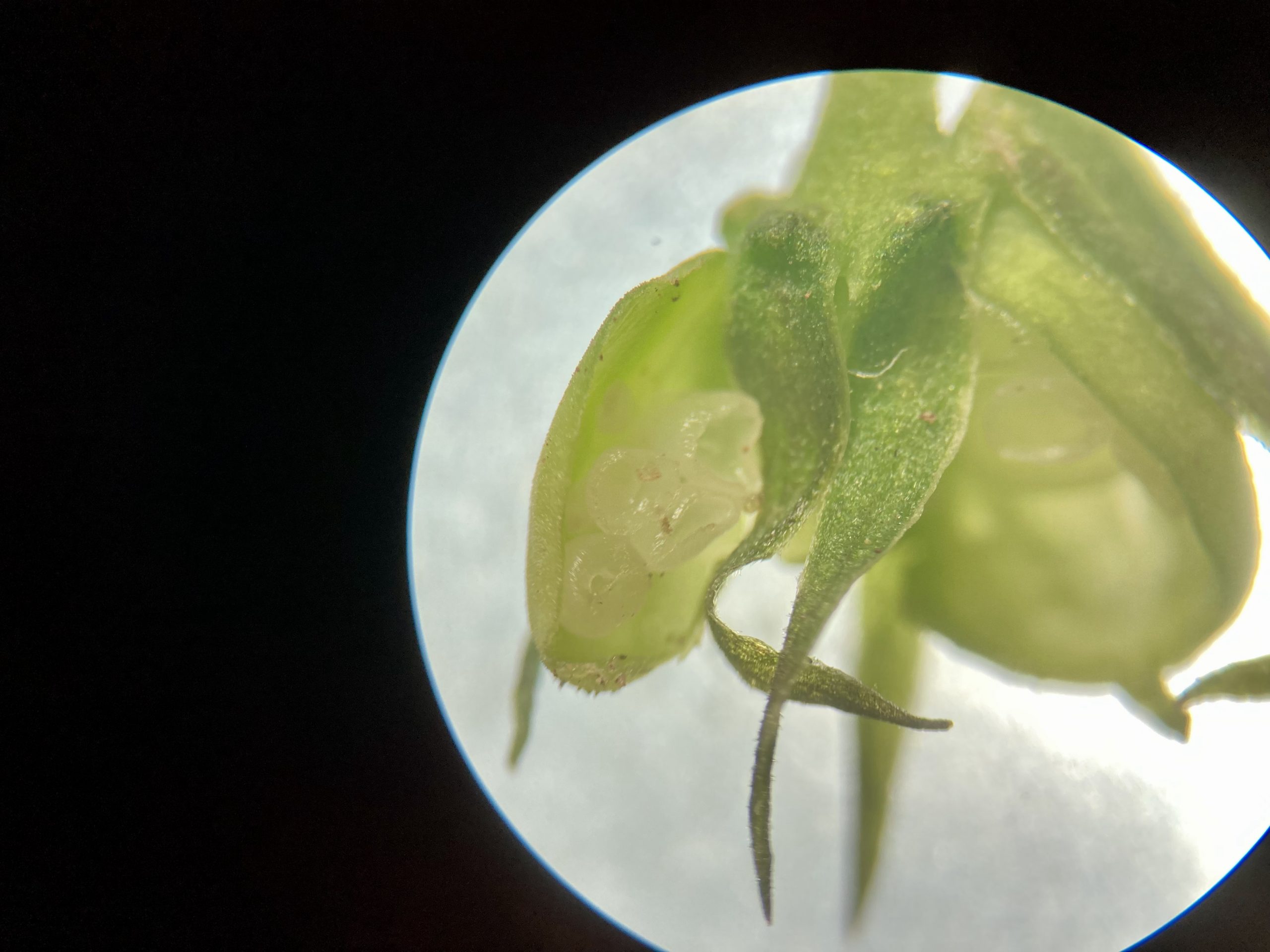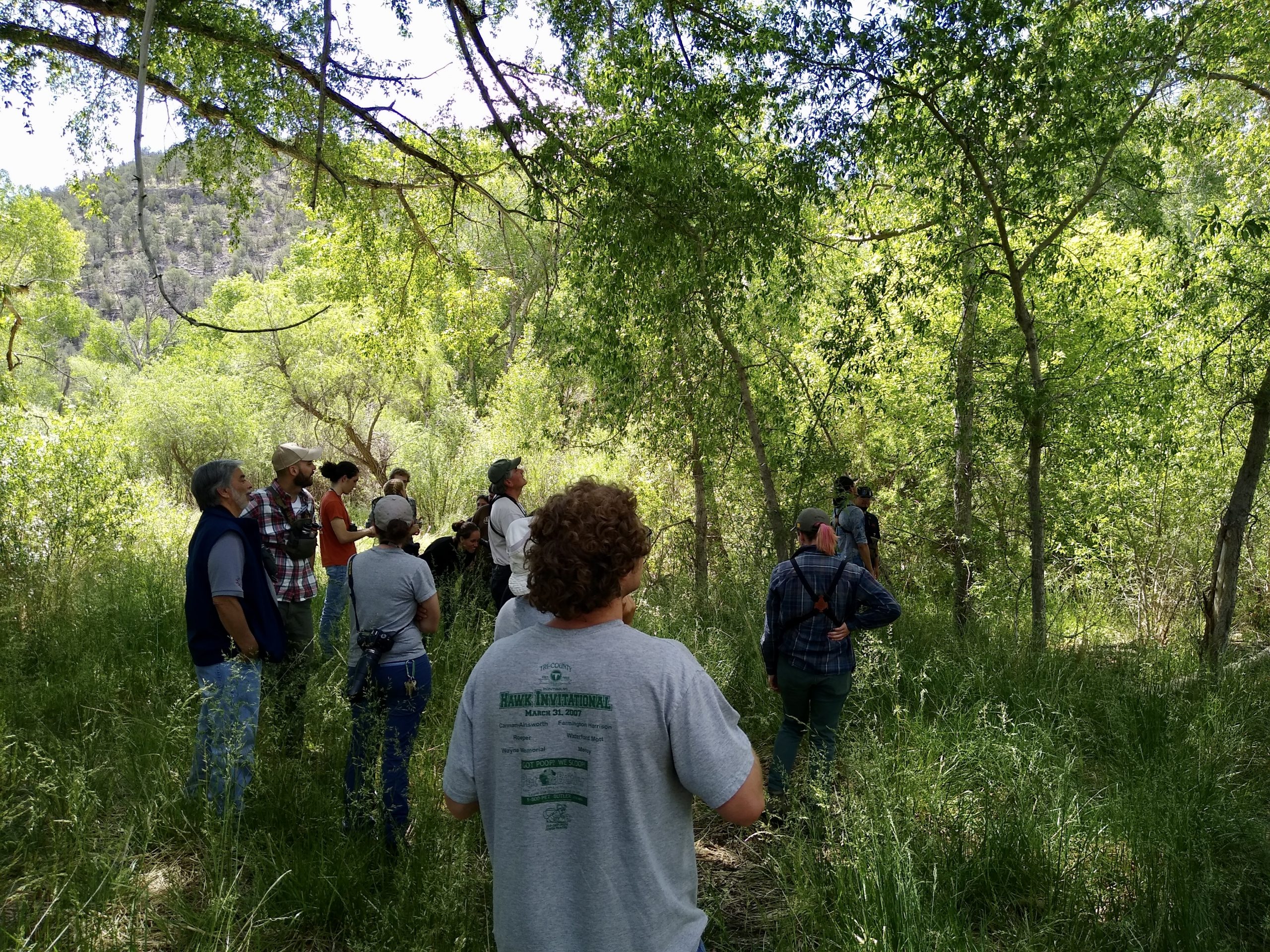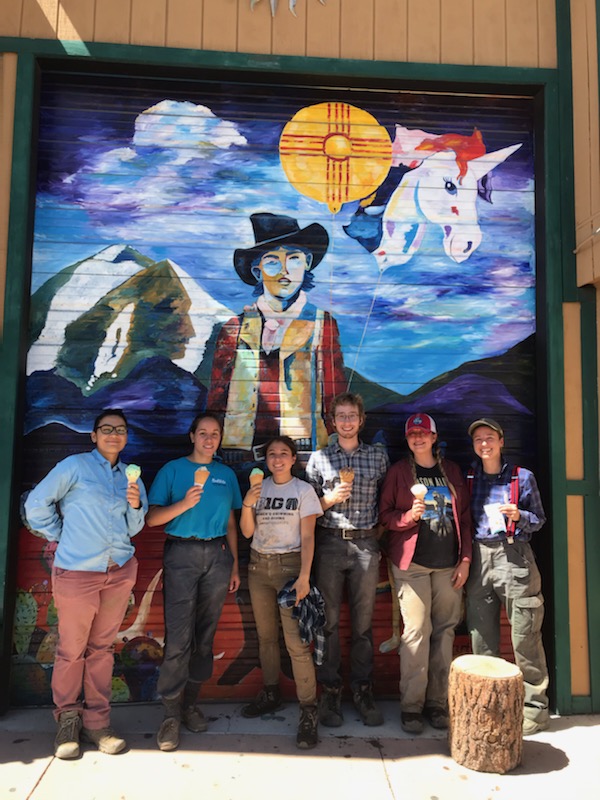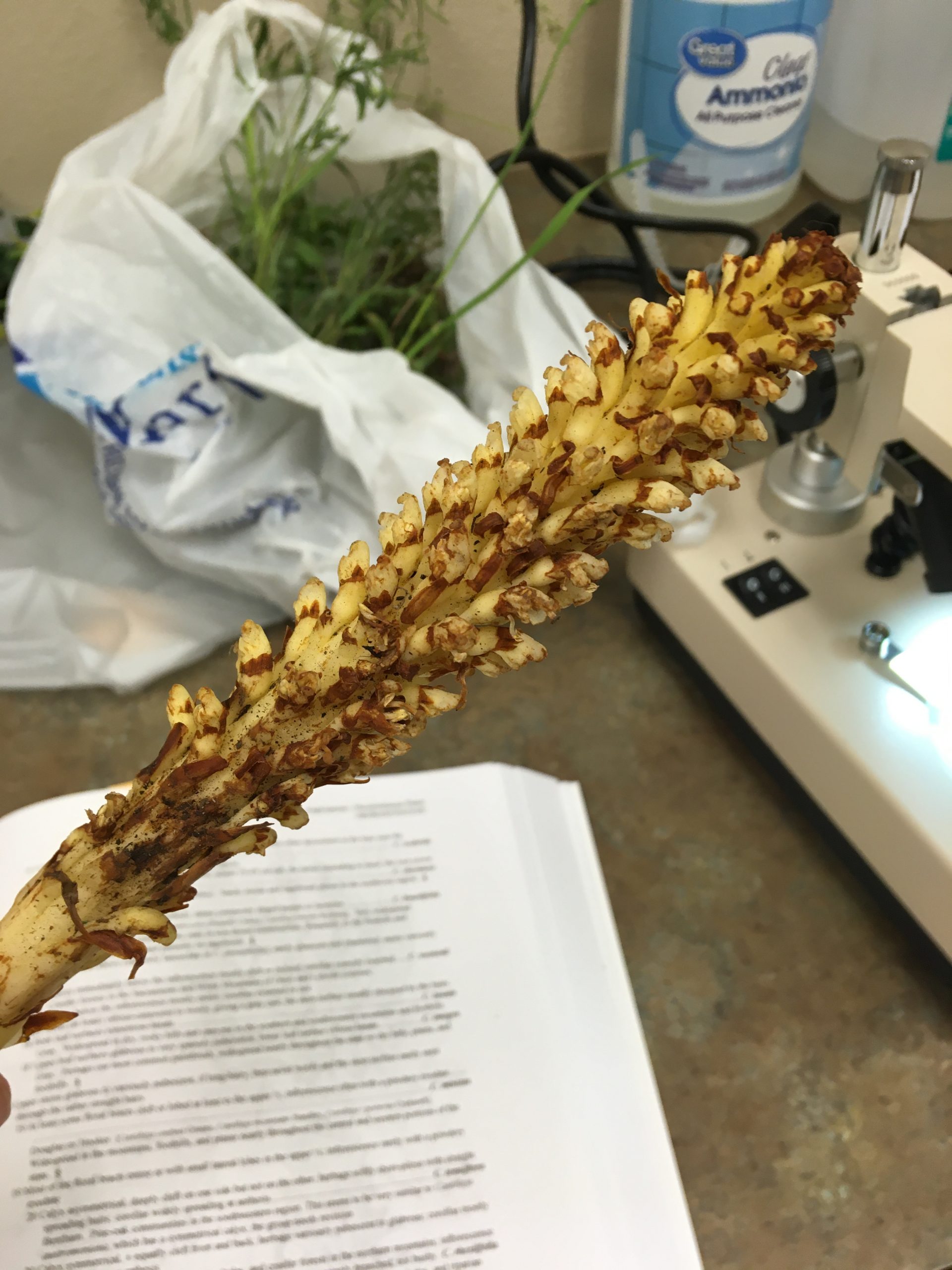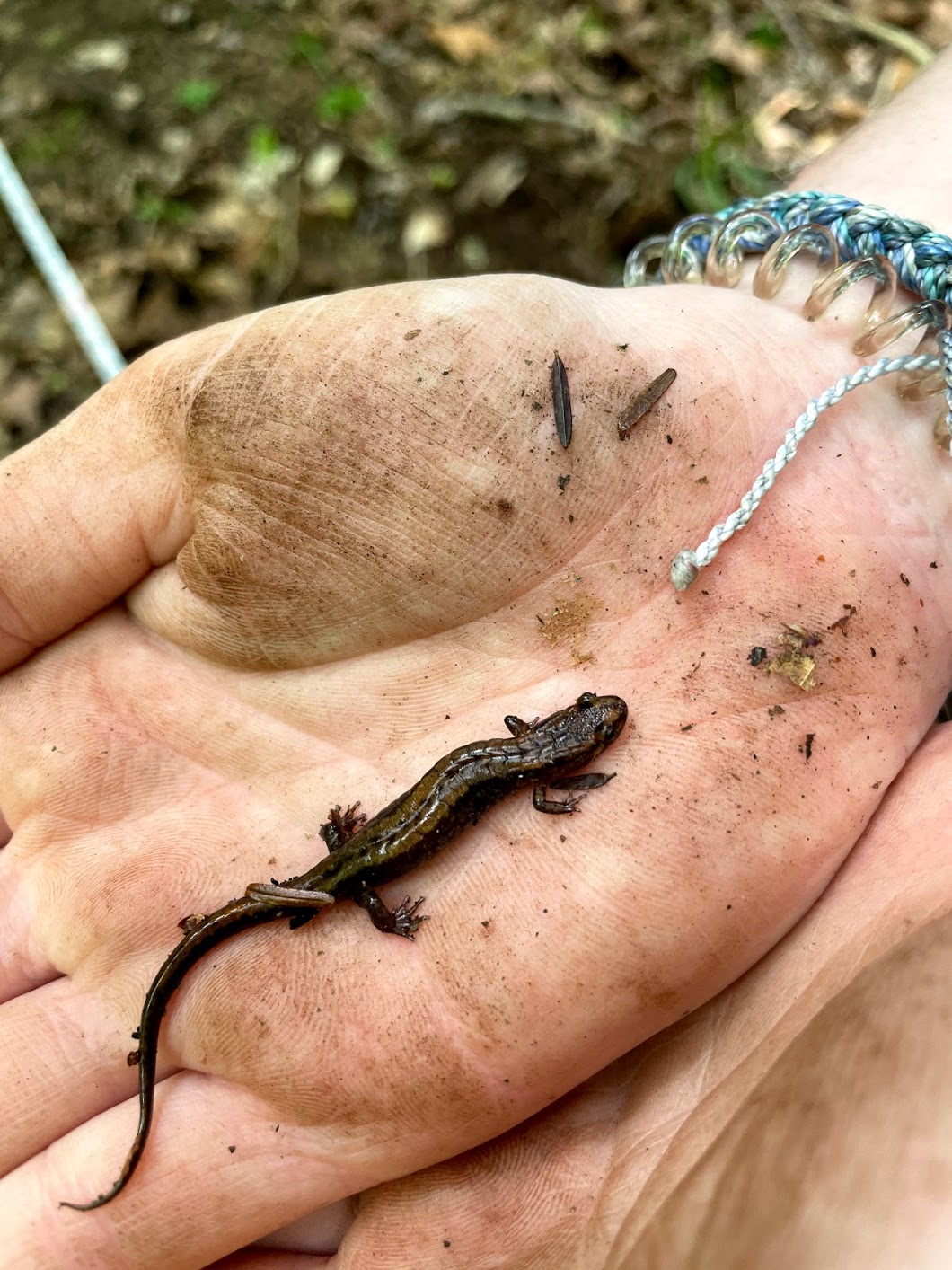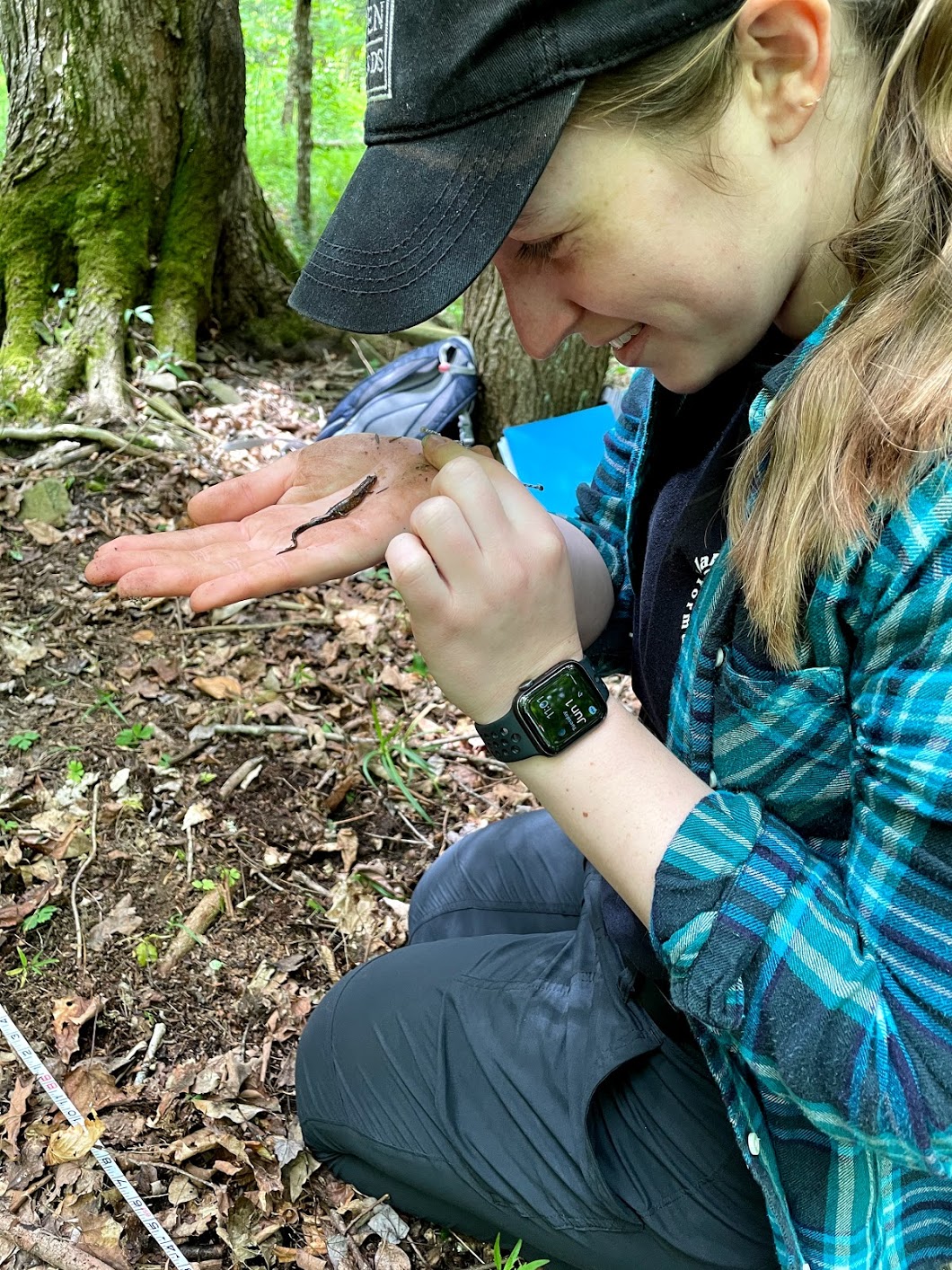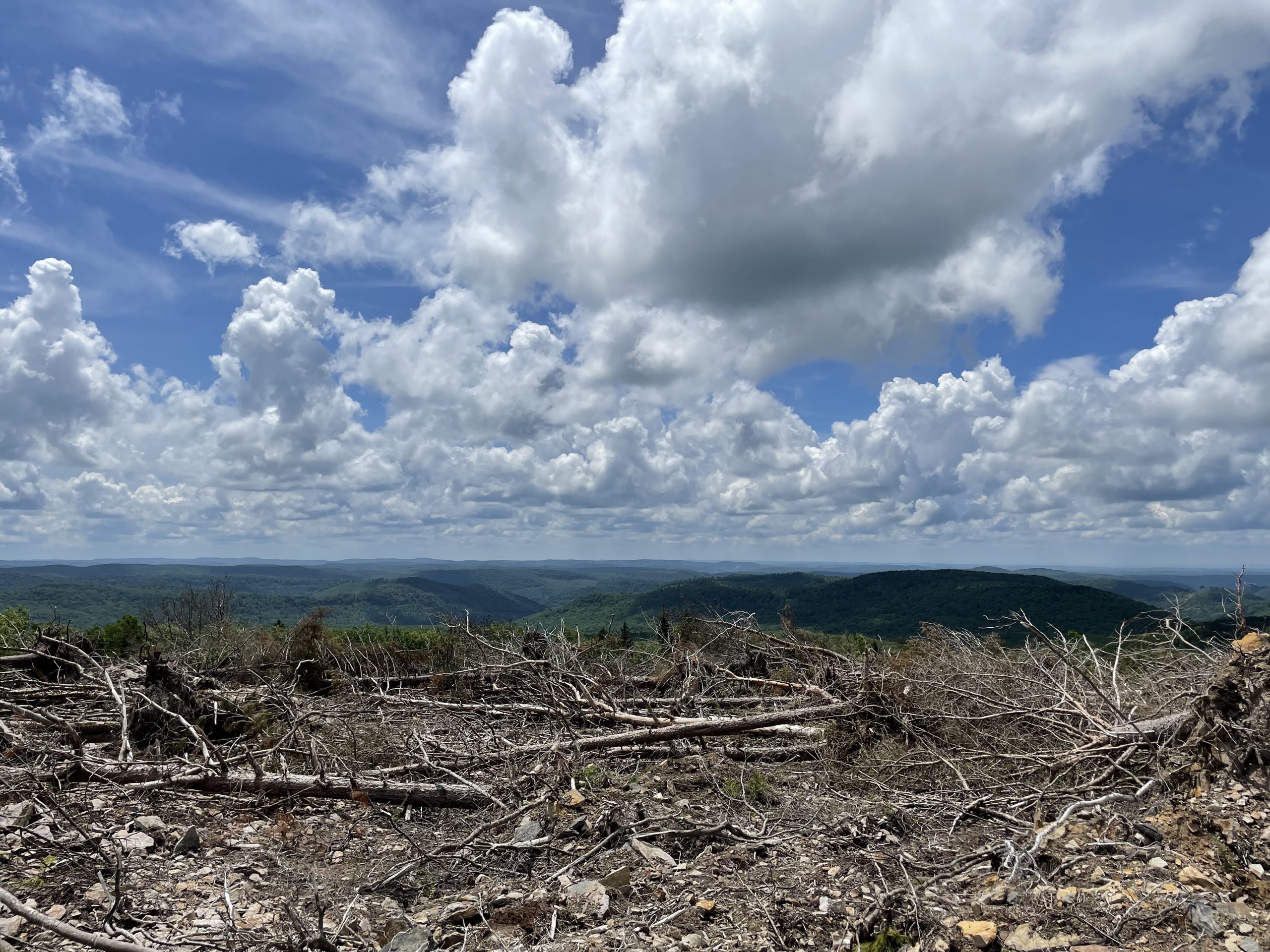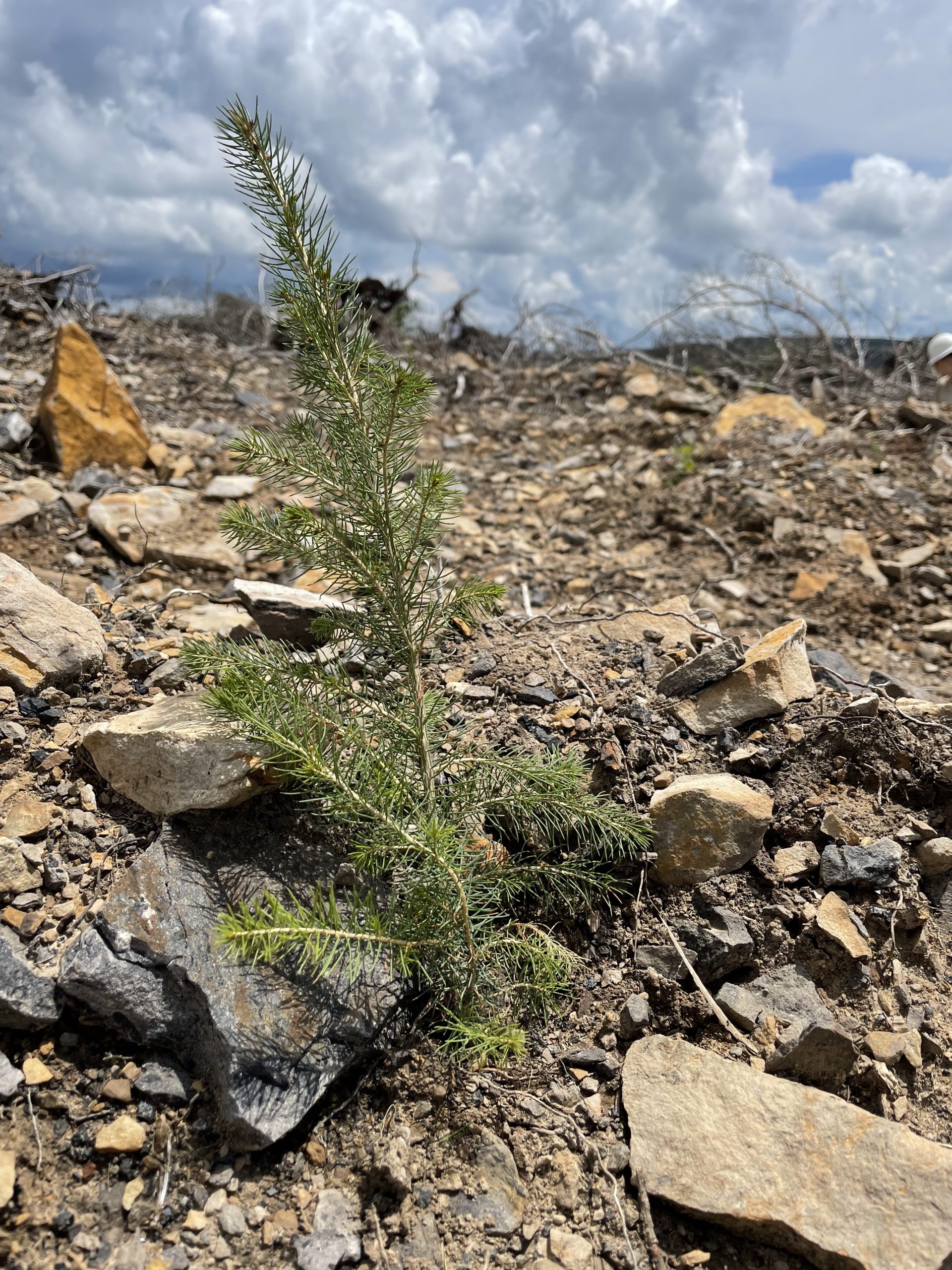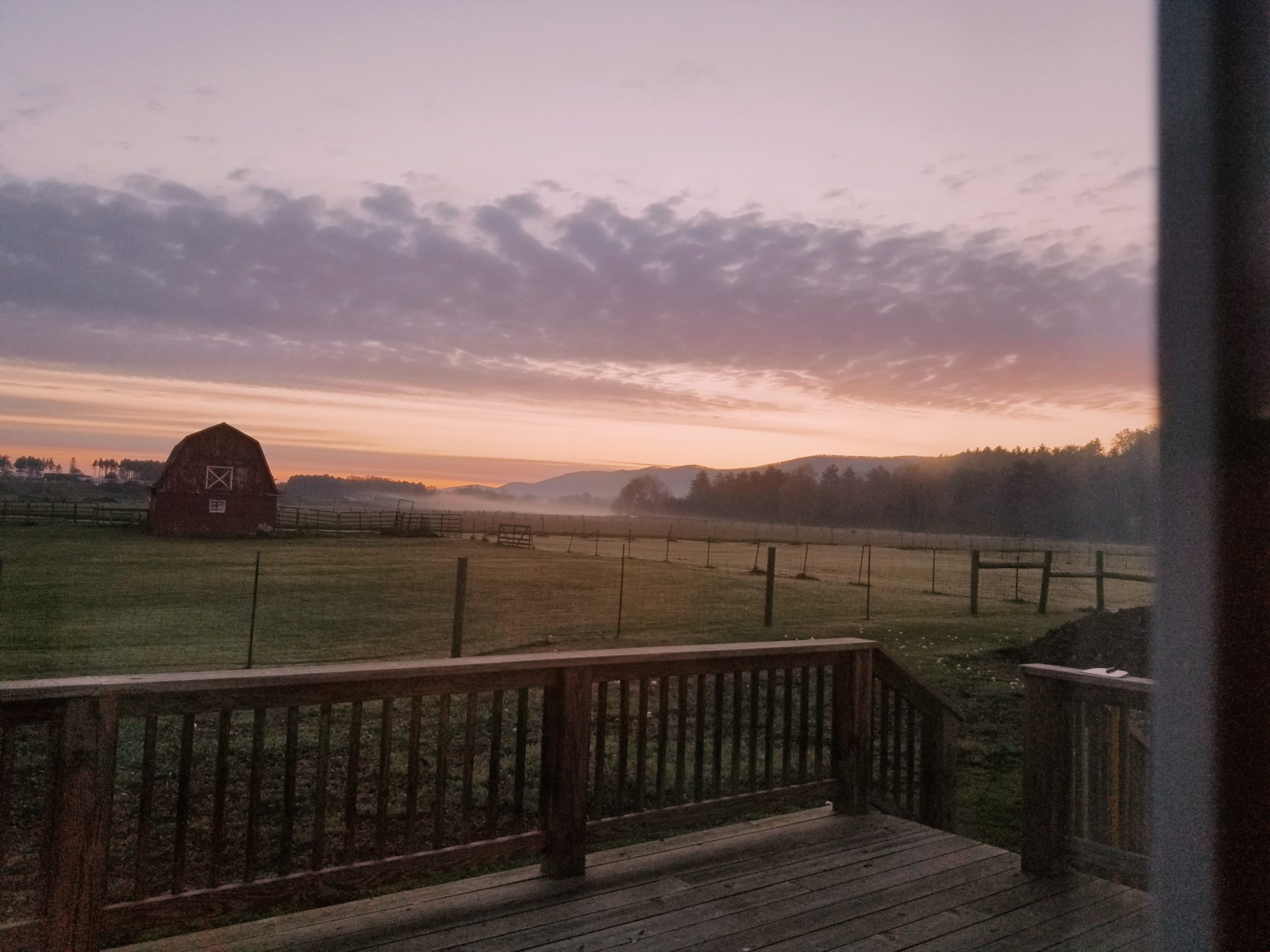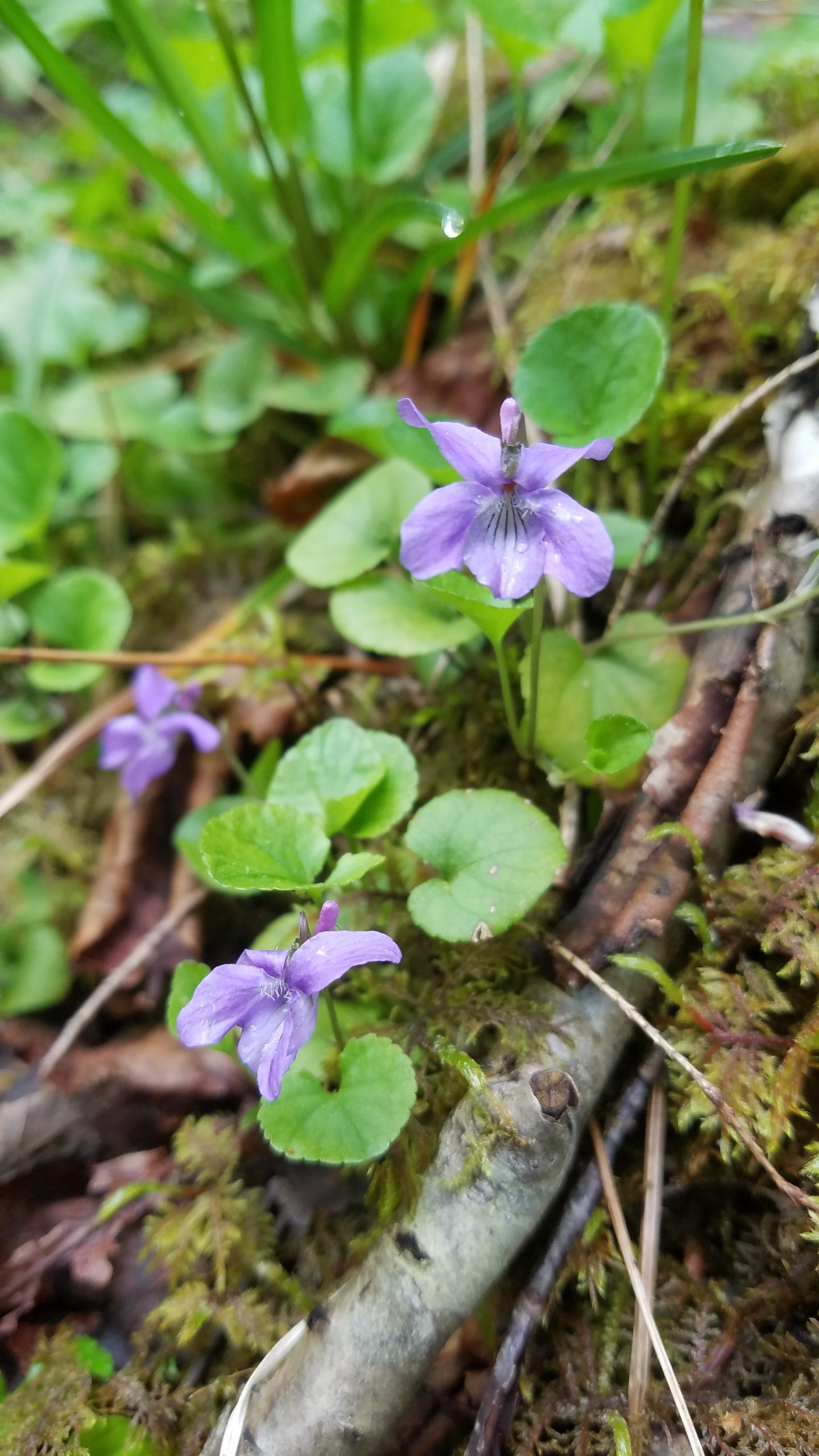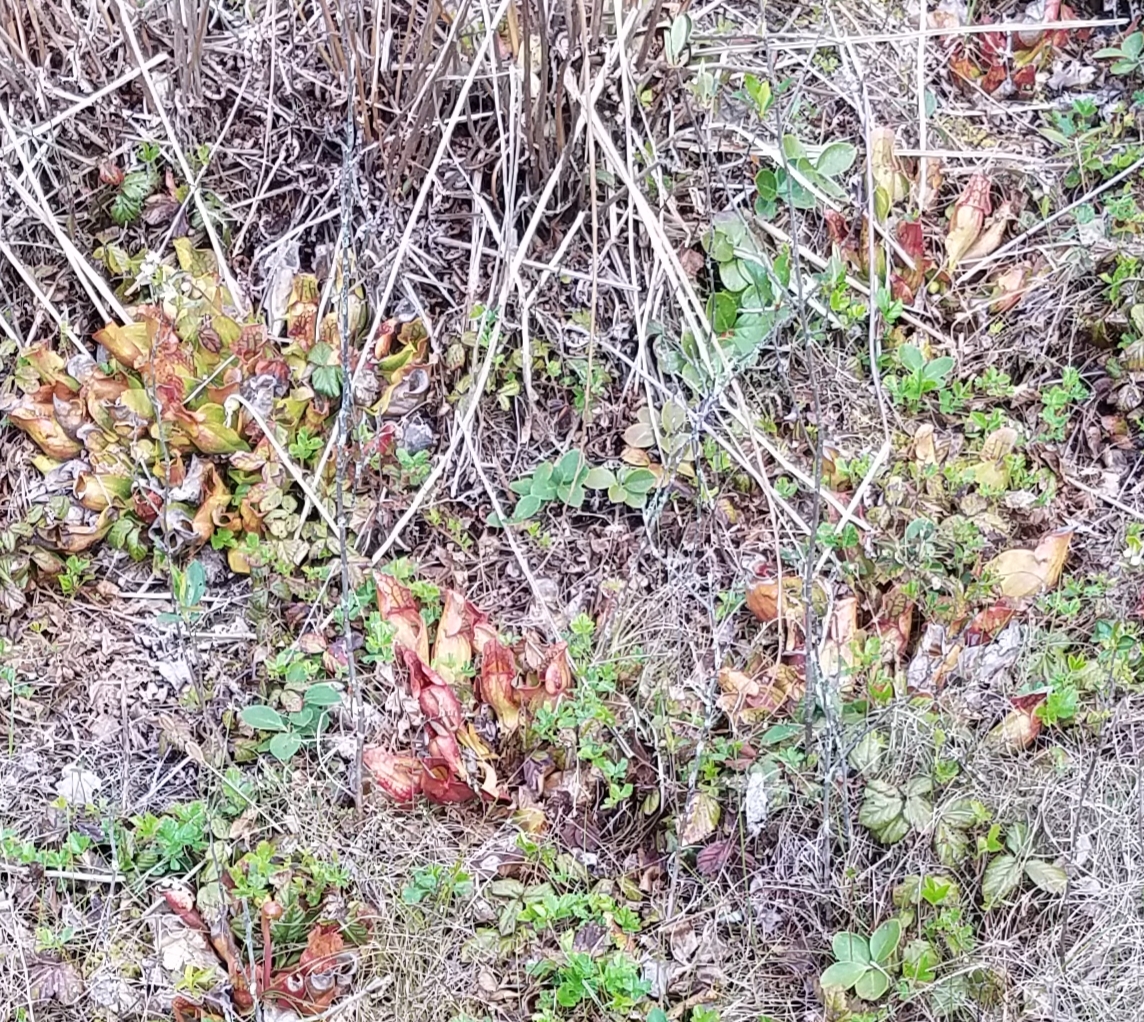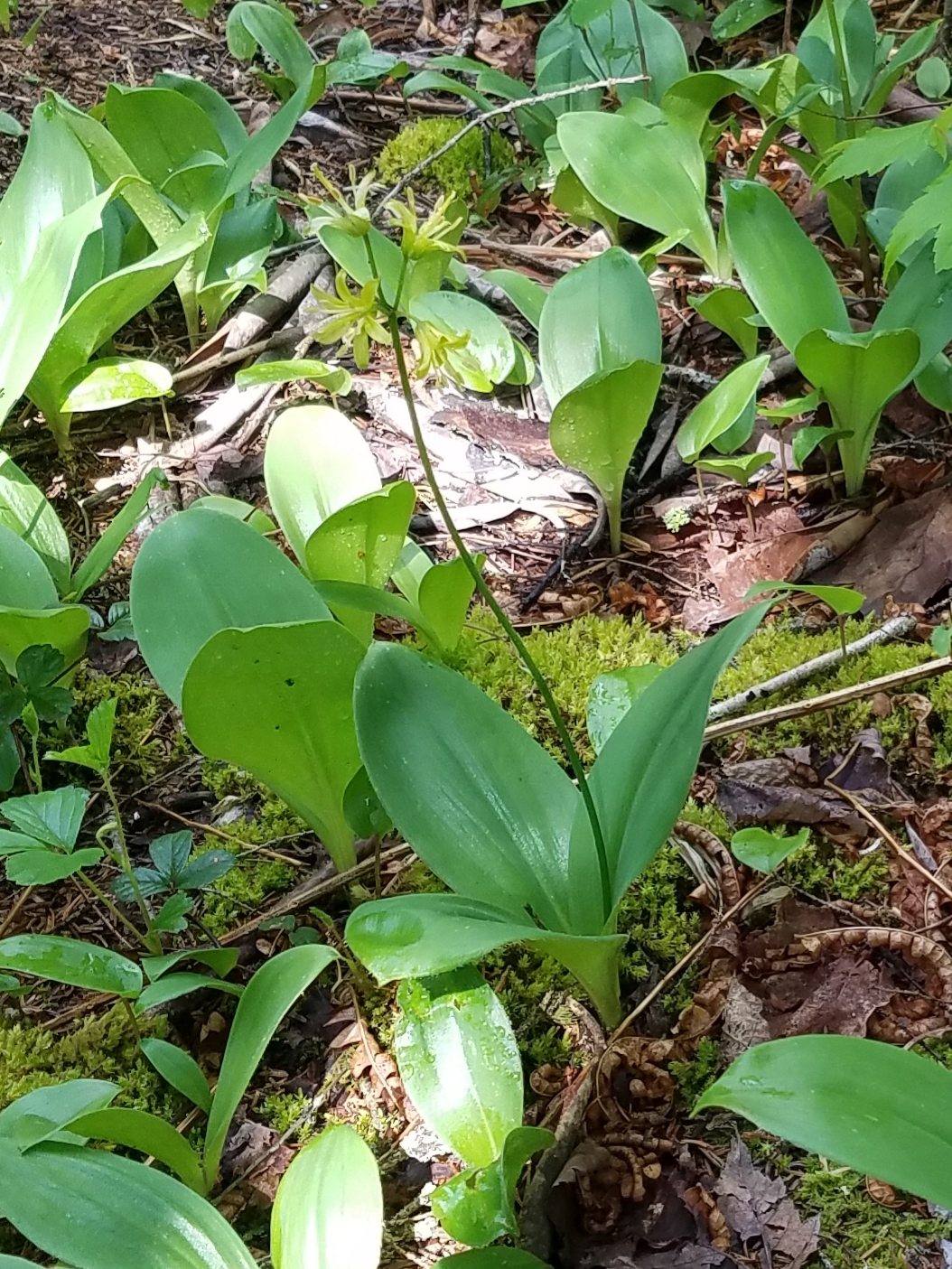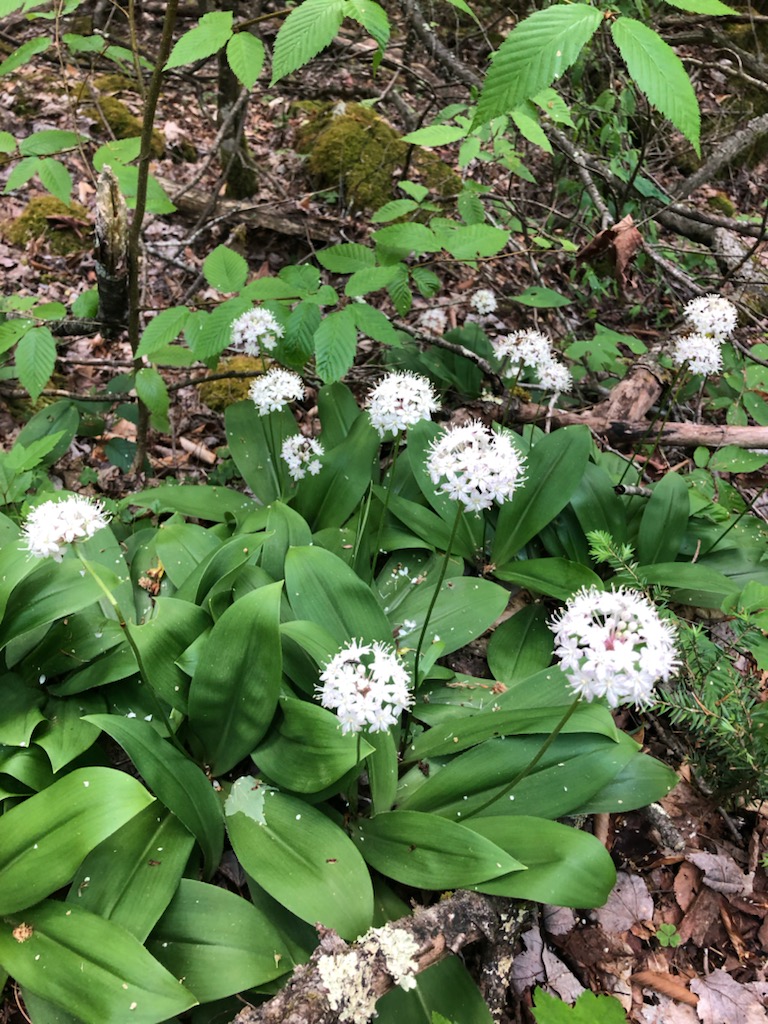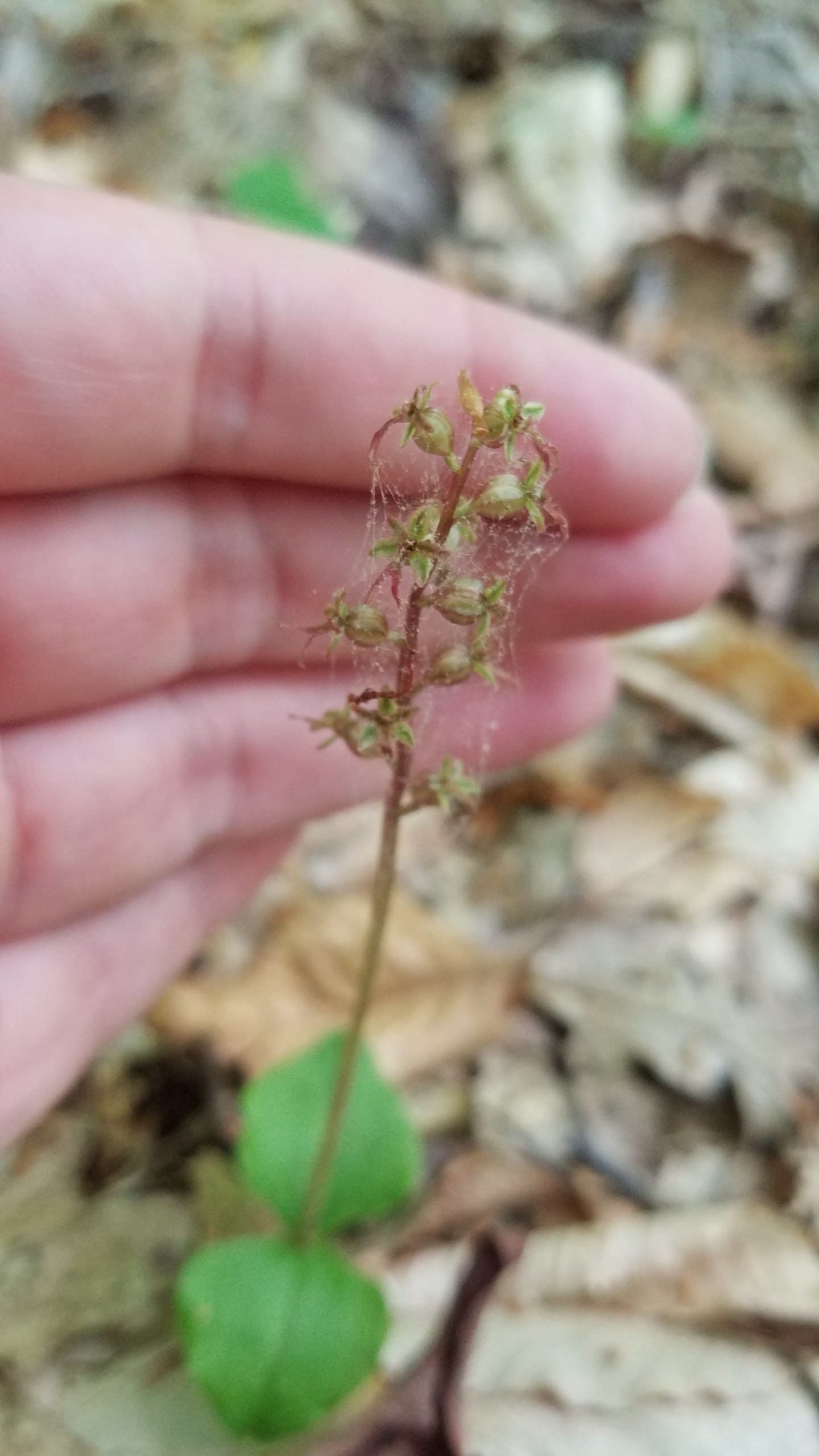“Try chewing on a twig,” suggested my mentor, Ian. He held a branch low for me. At first, it tasted like nothing, but as I broke through the smooth bark, a distinct minty flavor emerged. He explained to me that the tree was a yellow birch. Recognised by its unique peeling bark and serrated leaves, yellow birch branches bear a strong wintergreen flavor.
It was my first week interning at Ottawa National Forest. Two weeks after graduating from college, I had found my way to the small town of Ironwood, Michigan. The iron in Ironwood is gone now; the last mines closed decades ago, but there is no shortage of wood here. The town sits on the western edge of the forest, a million acres of aspen, pine, oak, maple, ash, tamarack, willow, cherry, birch, and more.
In the time I’ve been here, I’ve just begun to learn the local plants. Interrupted ferns have sporangia in the middle of their fronds. Sweetgrass with warm tan spikelets dots roadsides, and lily pads shaped like pies with a slice cut out float on calm ponds. While I’m here, I want to try and learn as many plants as I can. The forest is vast and changing. I want to know it all.
Some of the change happens naturally — a stand of aspen dies back and hardwood trees grow in succession — and some of the change is brought about by people — a stand of aspen is cut, so new aspen can grow in its place. Much of the change currently happening in the forest is driven by a warming climate. Ian told me that the elk and caribou that used to roam here have almost entirely been replaced by deer from the south. The deer eat young hemlock trees in the winter, making them rare in the forest. This summer, I will be focusing on a different source of change, invasive species.
Brought in from far away by boats, birds, firewood, and a thousand other sources, many invasive species throw local ecosystems out of balance. Without natural checks on growth carefully forged by thousands of years of evolution, these species can start to take over and greatly reduce ecosystem diversity. As CLM interns assigned to the invasive plant team at the forest, fellow intern Tessa and I — lovingly termed the “Weed Crew” — are tasked with heading out to sites in the forest with known infestations of “Ottawa’s most wanted,” the invasive plants with the most potential to harm the forest’s ecosystems if left unchecked. Armed with hand saws, trashbags, gloves, and hardhats we venture into the depths of the forest looking for Japanese barberry, invasive honeysuckle, garlic mustard, and others.
Though some invasive species have native lookalikes, each is distinctive in its own way. With glossy leaves and delicate thorns that will splinter into unarmored hands, the yellow stumps of Japanese barberry look like specks of gold against the dull forest floor. Invasive honeysuckle can look similar to native honeysuckle species on first inspection, but if you snap a twig, the dark bullseye inside lets you know you’ve found your mark. Garlic mustard can be identified visually — small white flowers with four petals crown erect stems — but true to its name the smell of the plant gives garlic mustard away. It has an odor that would make any vampire turn and run.
Spending long days in the forest, Tessa and I travel from site to site. Sometimes, despite the best efforts of past invasive plant crews, infestations have gotten worse. This week, I went to a trail entirely lined with dense clumps of garlic mustard. Sometimes, though, we will go to a past site and walk it diligently, concluding, after thorough inspection, that the invasive species has not grown back.
After cutting down a dense clump of invasive bushes, the forest can look barren, littered with rocks and stumps. In these moments, I remind myself that by removing the invasive species, we are creating the opportunity for new plants to grow. These past few weeks, we scattered many native seeds — primrose, sweetgrass, St. John’s wort, white asters, and black-eyed Susans. We also planted hundreds of native trees, making sure the little seedlings’ roots were straight and pressing the dirt family around them as if tucking them into bed.
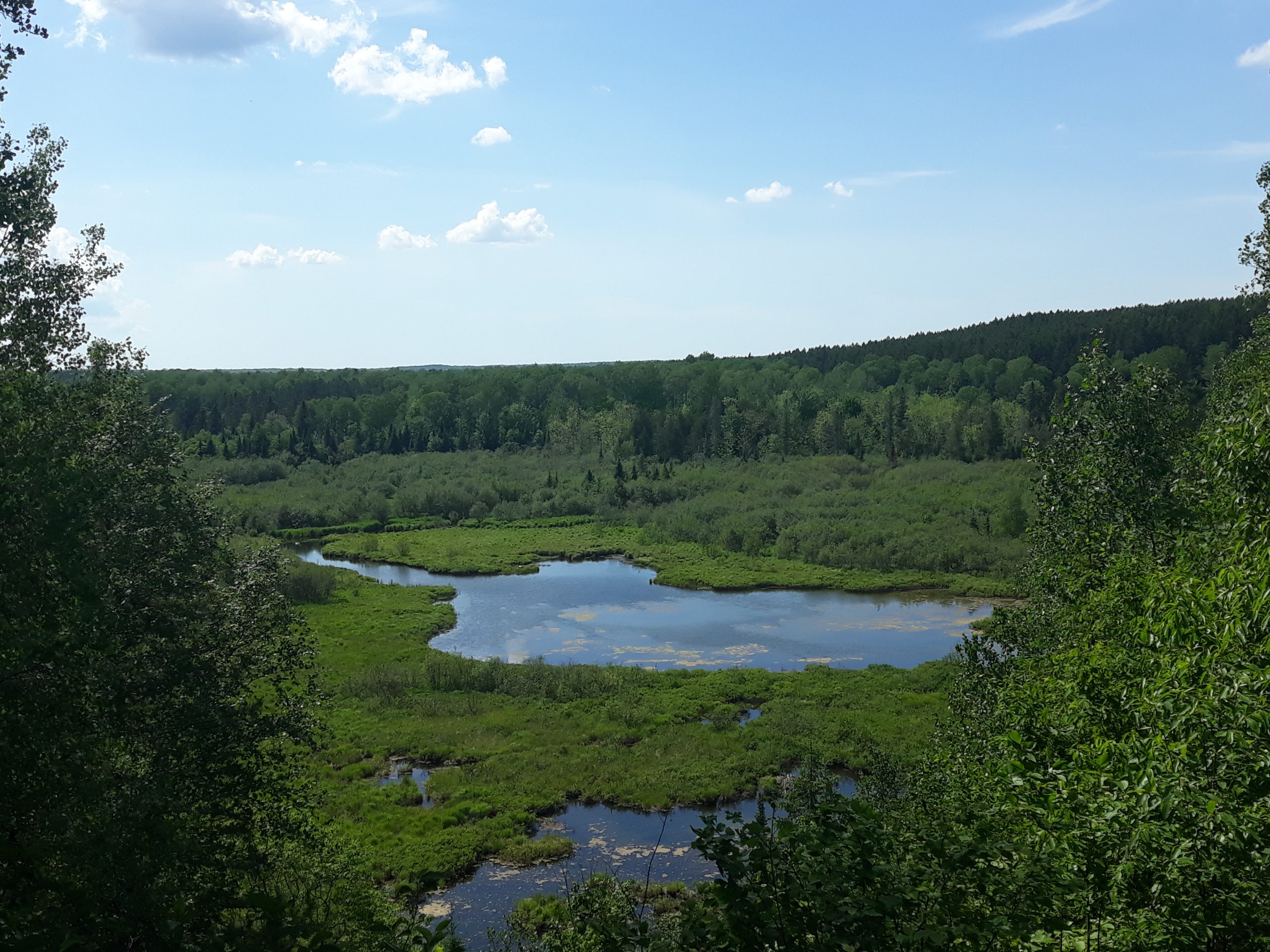
On Wednesday this week, Ian and I traveled deep into a wetland, my black rubber boots getting stuck in the mud, until, straining with all of my weight, I pulled them free. Tall moss and orange mushrooms grew over decaying logs, and light filtered in through the leaves of black ash trees. An invasive bright green beetle called emerald ash borer has just reached the edge of the Ottawa, so in a few decades all of the ash trees in the wetland will be gone. That’s why we were there. Carrying hundreds of silver maple fruits, we walked in a wide circle watching them twirl like helicopter blades into the mud. We are hopeful that as the ash trees die, the silver maples will grow in their stead.
Over the next few months, I’m looking forward to learning more about the forest, meeting new people, and continuing to explore the diverse ecosystems here. Thinking far into the future, though, the thing that excites me most about our work this season is the chance to come back to the Ottawa in twenty years. I will walk the places that are by then familiar to see all the ways the forest has changed, how it has stayed the same, and if the trees we planted have grown.

